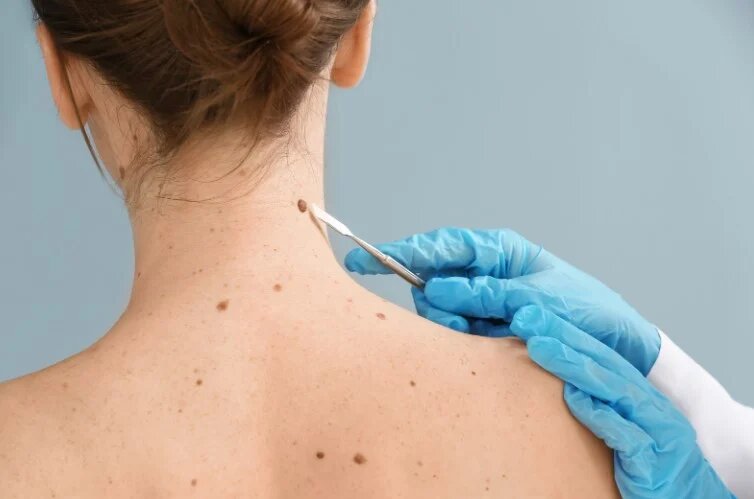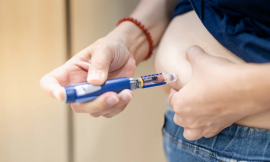It’s not uncommon to mistake a harmless pimple for something more serious, such as skin cancer. Many people wonder, can skin cancer look like a pimple? Understanding the differences is crucial, especially when it comes to early detection. Knowing how to identify early-stage skin cancer pimples on your face or body could save your life, as early diagnosis often leads to more effective treatment. Let’s explore the characteristics that differentiate a pimple from skin cancer and what to look for when you’re unsure.

What Is a Pimple?
A pimple is a small, inflamed spot on the skin that occurs when pores get clogged with oil, bacteria, or dead skin cells. Pimples typically appear as raised, red bumps and may contain pus. They are most common on the face, back, chest, and shoulders. In most cases, pimples are harmless and heal within a week or two. However, persistent pimples that don’t respond to treatment may need further examination.
What Is Skin Cancer?
Skin cancer develops when abnormal skin cells grow uncontrollably, often due to UV exposure. The most common types of skin cancer include basal cell carcinoma, squamous cell carcinoma, and melanoma. While skin cancer can manifest in various forms, many people are surprised to learn that it can resemble a pimple, especially in the early stages of skin cancer.
Can Skin Cancer Look Like a Pimple?
Yes, skin cancer can sometimes look like a pimple, particularly in its early stages. This can make it difficult for individuals to determine whether a small bump is a typical pimple or something more serious. Skin cancer can appear as a small, red bump that doesn’t go away, which is why it’s important to know how to differentiate between a pimple or skin cancer.
Key Differences Between a Pimple and Skin Cancer
1. Persistence
One of the main differences between a pimple and early-stage skin cancer pimples is how long the bump lasts. A typical pimple will generally heal within a week or two, while skin cancer lesions persist and don’t go away on their own. If you notice a bump on your skin that has been there for weeks or even months without improving, it may be time to consult a healthcare professional.
2. Texture and Appearance
While a pimple is usually smooth and may have a white or yellow head (due to pus), skin cancer lesions often have a different texture. For example, basal cell carcinomas may appear as shiny or pearly bumps with visible blood vessels. In contrast, squamous cell carcinomas might look scaly or crusty, while melanoma often has a dark color or irregular border. If a bump on your skin feels firm, doesn’t form a head, or looks unusual, it could be a sign of skin cancer rather than a pimple.
3. Bleeding or Oozing
A pimple may pop and release pus, but it typically won’t bleed excessively or ooze for a prolonged period. On the other hand, skin cancer pimples may bleed easily or ooze without healing. If the bump bleeds after a minor injury or irritation and doesn’t scab over, it could be a sign of skin cancer.
4. Location and Occurrence
While pimples most commonly appear in areas with active oil glands, such as the face, chest, and back, skin cancer can develop on any part of the body, even areas that aren’t exposed to the sun. Pay particular attention to bumps that appear in unusual locations, such as the scalp, hands, or legs, as they might indicate something more than just a pimple.
When to See a Doctor
If you’re unsure whether the bump on your skin is a pimple or skin cancer, it’s always best to err on the side of caution. Schedule a visit to a dermatologist if you notice:
- A bump that doesn’t go away after several weeks.
- A growth that bleeds or oozes regularly.
- Changes in the size, shape, or color of a bump.
- A sore that doesn’t heal.
Regular skin checks by a healthcare professional can help detect early-stage skin cancer pimples before they become a bigger issue. In particular, individuals with a history of sun exposure, tanning bed use, or a family history of skin cancer should be extra vigilant.
Conclusion
Distinguishing between a simple pimple and skin cancer can be challenging, but being aware of key differences like persistence, texture, and unusual symptoms can help. If you ever question whether you’re dealing with a pimple or skin cancer, it’s always best to seek professional medical advice. Early detection is essential, as it increases the likelihood of successful treatment. Keep an eye on your skin and don’t hesitate to consult a dermatologist if something doesn’t seem right.




